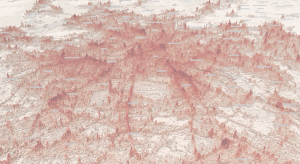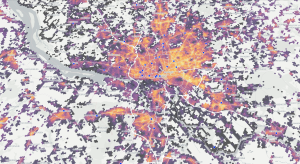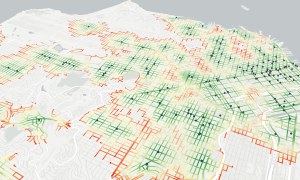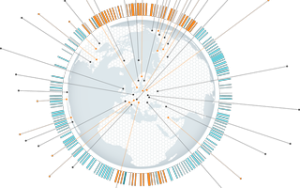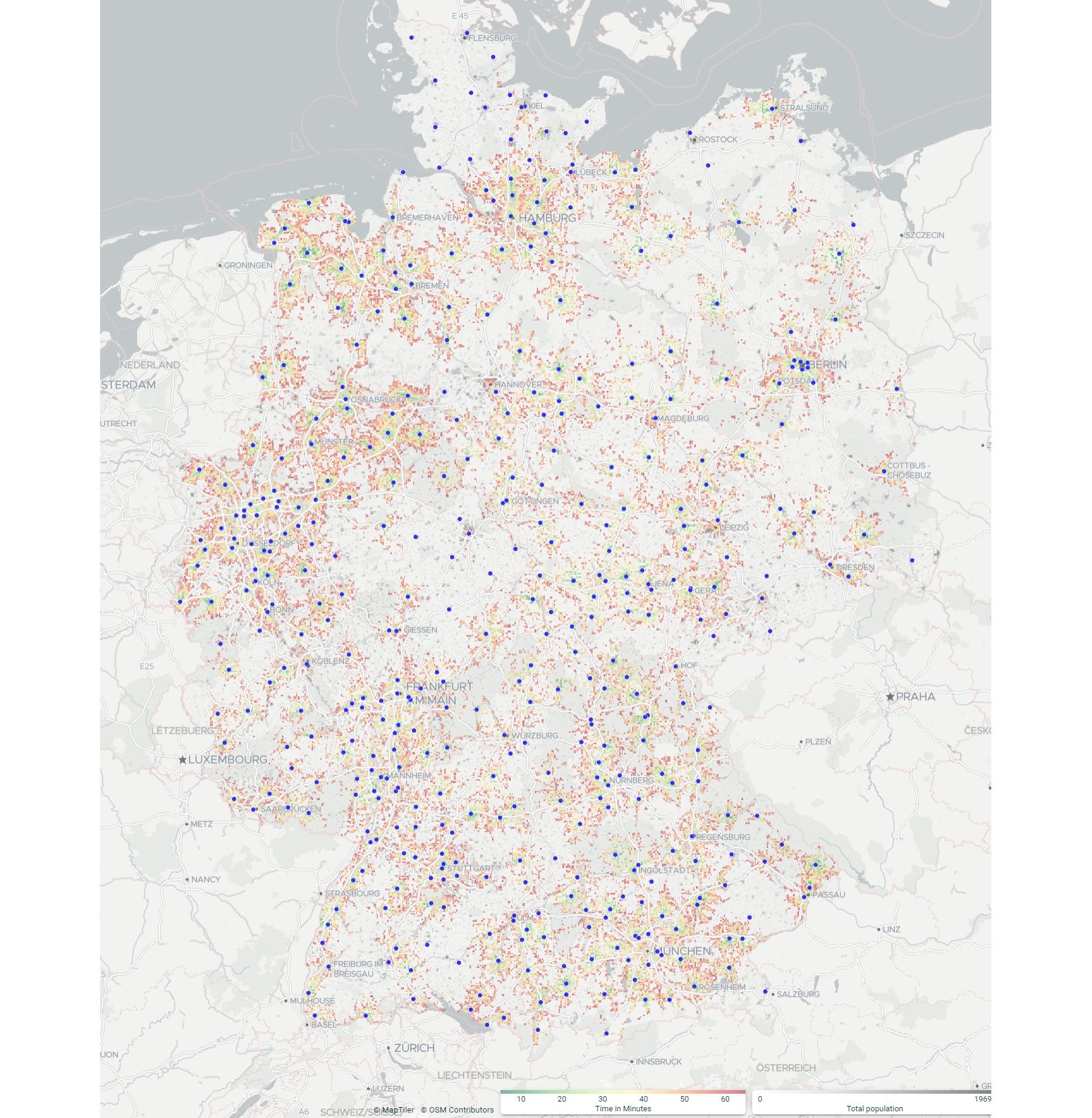
More than 90 percent of Germany’s population can reach a vaccination center within 30 minutes by car, but more than 2 million will need more than an hour’s drive to get there. By public transportation, a significant group will need more than an hour to reach an inoculation center.
Germany has been vaccinating its population since the end of December and has set up 446 inoculation centers around the country. We wanted to know how easily German inhabitants, 83 million in total based on 2018 figures, would be able to reach these locations.
Around 92 percent of Germany’s citizens, or 76.6 million in total, can reach a center within 30 minutes by car, according to calculations in location analytics platform location intelligence platform TargomoLOOP. The remaining 6.4 million people need longer. Almost half of these, 2.7 million, need more than hour to reach a vaccination center. These people live in rural areas, as can be seen in the map below.
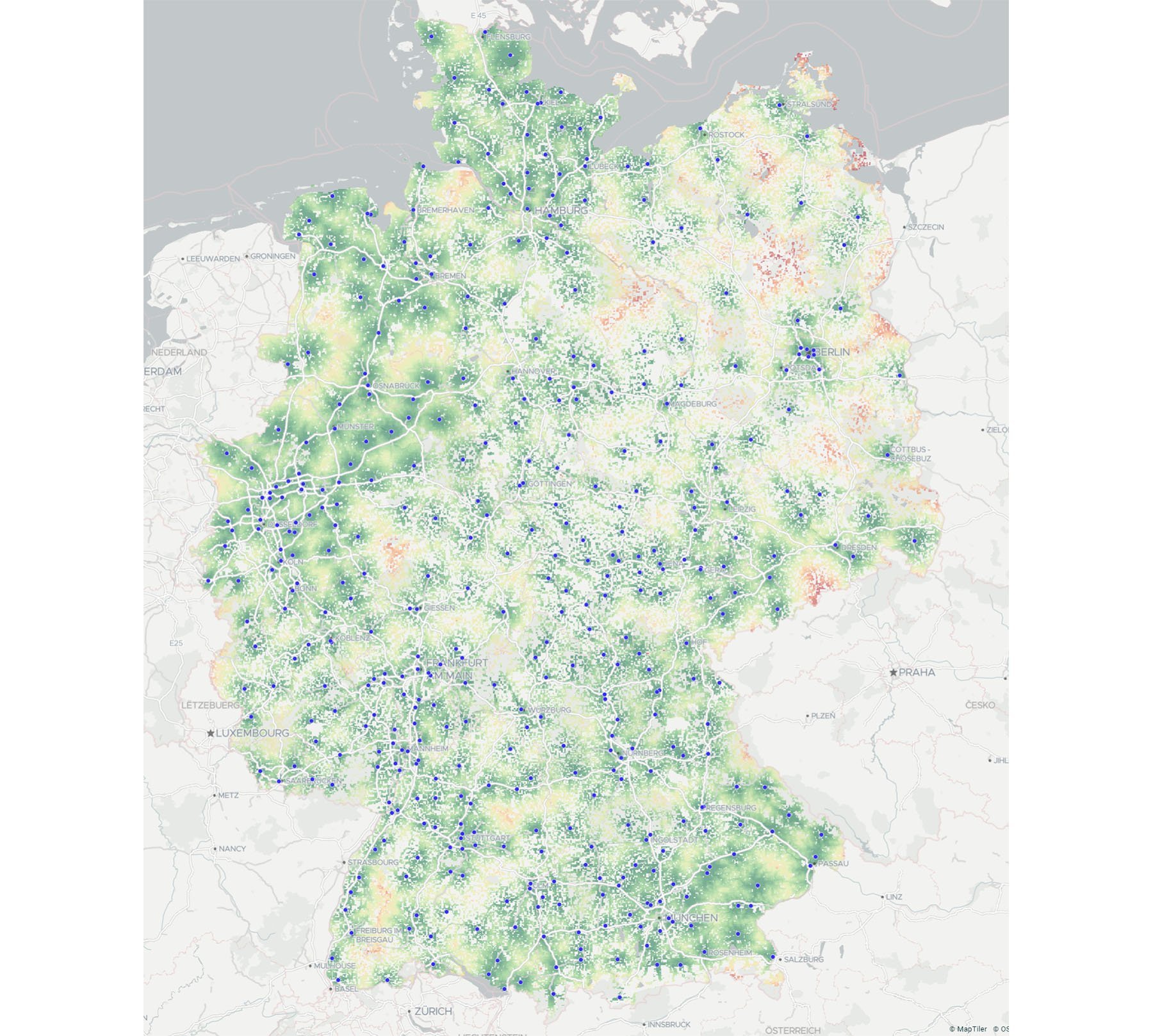
Reachability with public transportation
The situation changes when public transportation is taken as the travel mode. Within 30 minutes and a maximum of two transfers, only 22 million inhabitants can reach a vaccination center. When a maximum travel time of 60 minutes is allowed, the figures rises to 59.6 million, but that’s still missing almost 30 percent of the population.
The map below, based on public transportation, shows that especially people in rural areas would be better off if they could drive (or be driven) to a vaccination center by car.

The ease to reach a location is especially important for senior citizens. For German inhabitants of 65 or older, the reachability percentages drop slightly, but the vast majority can still reach vaccination centers. Within 30 minutes around 88 percent of 17.9 million seniors can reach a location by car. Within 60 minutes by car, the percentage improves to 92 percent. Traveling a maximum of one hour by public transportation, only 69 percent of senior inhabitants can reach an inoculation center.
Luckily, senior citizens aged 71 or older often receive a taxi voucher from the municipality where they live. People living in elderly homes can receive a vaccination where they live so the numbers are even better as this analysis suggests. Mobile inoculation teams can also visit these people and others who are not fit enough to travel. Furthermore, Germany plans to start vaccinating people by their general practitioners in April. These doctors are typically located in the neighborhoods where they live, and would greatly improve the availability and reachability of vaccination locations.
Curious to make similar analyses yourself? The basic version of TargomoLOOP is free of charge and allows users to quickly gain insights into their locations. Simply sign up and start analyzing.
About TargomoLOOP
Location analytics platform TargomoLOOP supports managers in retail, food service, real estate, public services and logistics to analyze locations and quickly see their potential in terms of catchment area, customer base and reachability. AI-powered predictive analytics allows retailers to identify the success factors of a network of stores and predict the revenue potential of new locations. These insights help managers to plan and optimize their branch network.
The platform’s basic version offers essential features to analyze locations with maps, demographics, and reachable places (also known as Points of Interest). Users can easily rank locations by category and weight. They can correlate location variables with performance. Users can analyze an unlimited number of locations and download reports of their findings. No set-up is required: Simply register, type in an address, and get results within seconds.
